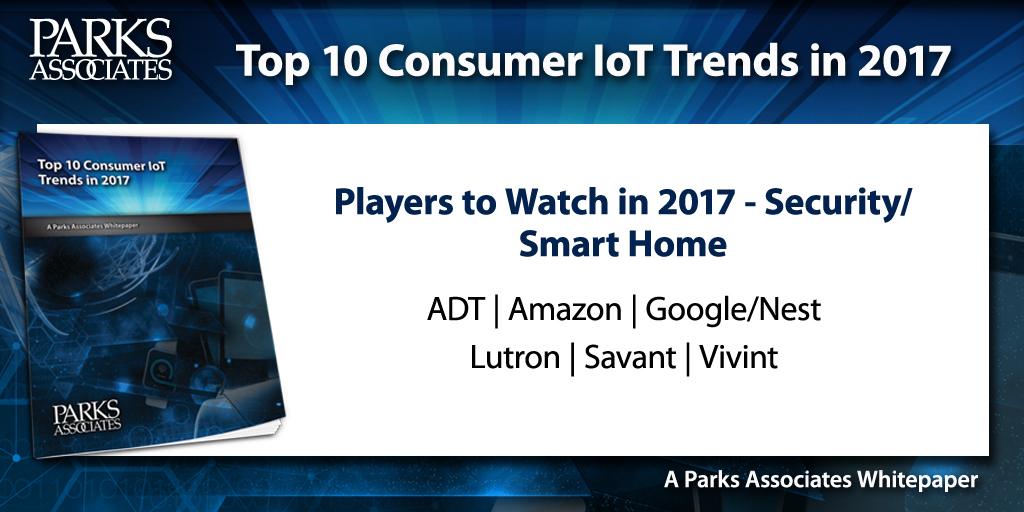We recently released a complimentary whitepaper examining the top trends in the connected home, health, and mobile industries. Top 10 Consumer IoT Trends in 2017, which features insight from Parks Associates’ analyst team, examines key topics driving growth and monetization of the IoT.
To cross the chasm, the smart home industry will continue to develop new use cases for security, peace of mind, and energy management.
Despite years of collective marketing, most consumers are also unfamiliar with utility programs. Parks Associates research shows less than 20% of U.S. broadband households are aware of energy-efficiency programs from their utilities. Consumers are willing to take action to save energy—over 60% of U.S. broadband households strongly believe that saving energy and lowering utility bills are important.
The smart home represents a new opportunity for utilities. By taking advantage of the strong growth of smart home solutions, utilities can accelerate adoption through energy programs that incentivize adoption and in doing so raise awareness of energy programs and the broader smart home market. Joint marketing efforts help both utilities and smart home solution providers achieve their objectives.
The security market continues to be the leading channel for smart home products and systems. The consumer value proposition of home security is clear. In addition, consumers quickly understand how smart home products and services can extend the value of security.
Nearly 25% of U.S. broadband households have a working and active security system, and 65% of these households plan to buy a smart home device within the year. Among U.S. broadband households with a home security system, the ability to protect one’s home while traveling is the top driver for their security purchases.
Parks Associates analysts expect that almost 55 million smart home devices will be sold to U.S. broadband households in 2020. Therefore, privacy and security remain an issue that the industry must aggressively address.

Additional smart energy research can be found in Parks Associates’ report Managing Home Resources: Smart Energy and Water Products.
Download the new whitepaper for a full explanation of the Top 10 Consumer IoT Trends in 2017:
- Voice control is vying to become the primary user interface for the smart home and connected lifestyle.
- The smartphone market plateaus, and mobile carriers experiment to retain subscribers, which will threaten fixed broadband services.
- CE manufacturers focus on new product categories and ecosystem strategies to compensate for stagnation in a mature market.
- Virtual and augmented reality gain a foothold in niche operations and greater awareness among early adopters, creating opportunities for social VR experiences.
- The differences between on-demand and live viewing continue to blur as consumers embrace a variety of OTT video services.
- Consumers increasingly expect connectivity in their cars, but pricing, safety, and data privacy concerns inhibit market growth.
- To cross the chasm, the smart home industry will continue to develop new use cases for security, peace of mind, and energy management.
- Insurers are exploring new business opportunities in smart home products and services and will continue to launch trials and new partnerships.
- Wearables and smart watches are expanding as healthcare tools and will be integrated with other IoT applications.
- Consumerization of healthcare services and devices drives integration with smart home ecosystems and new business models.
Further Reading:


